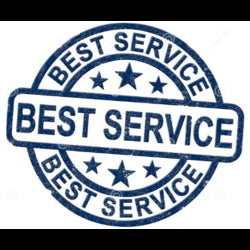
Metal buildings are engineered to withstand harsh weather conditions, but maintaining comfortable temperatures during the winter months requires strategic planning and proper implementation of heating solutions. The challenge lies in metal's natural heat conductivity properties, which can lead to significant heat loss without proper winterization measures. This comprehensive guide will show you proven methods to keep your metal building warm throughout the coldest winter months while maximizing energy efficiency and minimizing costs.
Understanding why metal buildings lose heat quickly is crucial for developing effective warming strategies. Metal conducts heat approximately 400 times faster than wood, making proper insulation and sealing essential for maintaining comfortable indoor temperatures during winter.
How to Keep Your Metal Building Warm in the Winter Through Proper Insulation

Quality insulation is the cornerstone of maintaining warmth in metal buildings during winter. Without adequate insulation, even the most powerful heating systems will struggle to maintain comfortable temperatures while energy costs skyrocket. The key is selecting the right insulation type and ensuring proper installation to create an effective thermal barrier.
High-Performance Insulation Options for Winter Warmth
Spray Foam Insulation: This premium insulation option excels at sealing air leaks and providing superior thermal resistance. Spray foam expands to fill even the smallest cracks and crevices, preventing cold air infiltration and warm air loss. With R-values ranging from 6-7 per inch for closed-cell foam, it offers exceptional thermal performance for metal buildings.
Fiberglass Blanket Insulation: A cost-effective solution with R-values between R-2.9 to R-3.8 per inch of thickness. While more affordable than spray foam, fiberglass requires careful installation with proper vapor barriers to prevent moisture issues that can reduce effectiveness.
Rigid Board Insulation: Made from polystyrene, polyurethane, or polyisocyanurate, rigid foam boards provide continuous insulation without thermal bridging. These boards are particularly effective for flat roofs and create an airtight seal when properly caulked or taped together.
Reflective Barrier Insulation: Consisting of highly reflective materials, radiant barriers work by reflecting heat into the building rather than absorbing it. This insulation type should be installed between exterior panels and support beams for maximum effectiveness.
Strategic Insulation Placement
Focus insulation efforts on areas with the highest heat loss potential. Approximately 26% of heat loss occurs through the roof, while walls account for an additional 33%. Prioritizing these areas provides the most significant impact on winter comfort and energy savings.
Best Heating Systems for Metal Buildings in Winter
Selecting the right heating system is crucial for maintaining comfortable temperatures while controlling energy costs. Modern heating options offer various benefits depending on your building size, usage patterns, and budget considerations.
Energy-Efficient Heating Solutions
Heat Pump Systems: These versatile systems provide both heating and cooling capabilities, making them ideal for year-round climate control. Modern heat pumps can operate efficiently even in cold temperatures, with SEER ratings of 20-25 providing excellent energy efficiency.
High-Efficiency Furnaces: With AFUE ratings of 90% or higher, these systems convert the majority of fuel into usable heat. Natural gas and propane options are available, with propane being particularly suitable for rural locations.
Radiant Heating Systems: Floor-mounted or wall-mounted radiant systems provide even heat distribution without the air movement associated with forced-air systems. These systems are particularly effective in metal buildings with concrete floors.
Electric Space Heaters: For localized heating needs, electric heaters offer flexibility and precise temperature control. Modern units include programmable thermostats and safety features for reliable operation.
Supplemental Heating Strategies
Consider portable heating solutions for areas requiring occasional warmth or backup heating during system maintenance. Propane heaters, electric space heaters, and infrared heaters can provide targeted heating where needed most.
How to Keep Your Metal Building Warm in the Winter with Weatherization
Comprehensive weatherization creates an effective barrier against cold air infiltration while preventing valuable heated air from escaping. This process involves sealing gaps, upgrading windows and doors, and addressing structural vulnerabilities.
Critical Sealing Areas
Window and Door Seals: Cracked or deteriorated seals around windows and doors create direct pathways for cold air entry. Replace weatherstripping annually and apply caulk to stationary gaps. Consider upgrading to energy-efficient windows with double or triple-pane glass for significant improvement.
Panel Connections: Metal building panels connect at numerous points, creating potential air leak locations. Focus sealing efforts on panel ends, corners, eaves, and base connections where structural elements meet.
Electrical and Plumbing Penetrations: Any opening through the building envelope requires proper sealing. Use expanding foam or appropriate sealants around electrical conduits, plumbing penetrations, and ventilation connections.
Advanced Weatherization Techniques
Install thermal curtains or blinds on windows to provide additional insulation layers. These window treatments can significantly reduce heat loss during nighttime hours when temperatures drop most dramatically.
Optimizing Metal Building Design for Winter Warmth
Strategic design choices during construction or renovation can dramatically improve winter heating efficiency and reduce long-term energy costs.
Ceiling Height Considerations
Lower ceilings reduce the volume of space requiring heating, leading to faster warm-up times and lower energy consumption. High vaulted ceilings allow warm air to accumulate far above occupied spaces, reducing heating efficiency. Aim for ceiling heights between 8-10 feet in heated areas for optimal performance.
Window and Skylight Placement
Strategic window placement maximizes passive solar heating during the winter months. South-facing windows capture the most solar energy, while proper overhangs prevent summer overheating. Large windows and skylights aligned with winter sun patterns can provide significant natural heating.
Building Orientation and Layout
Orient the building's length to maximize southern exposure, allowing for larger south-facing wall areas with windows. Minimize north-facing openings where cold winter winds typically originate. Plan interior layouts to group heated spaces together, reducing the area requiring climate control.
How to Keep Your Metal Building Warm in the Winter Using Smart Controls
Modern control systems optimize heating efficiency while maintaining comfortable temperatures throughout the winter months. Smart thermostats and zoning systems provide precise temperature management while reducing energy waste.
Programmable Thermostat Benefits
Install programmable thermostats to automatically adjust temperatures based on occupancy schedules. These systems can reduce heating costs by 10-15% through optimized temperature setbacks during unoccupied periods.
Key programming strategies include:
-
Lower temperatures during nighttime hours
-
Reduced heating during extended absences
-
Gradual temperature increases before occupancy
-
Zone-specific temperature control for multi-use buildings
Smart HVAC Integration
Modern HVAC systems with smart controls can learn usage patterns and adjust heating accordingly. These systems monitor outdoor temperatures, occupancy levels, and energy costs to optimize heating schedules automatically.
Energy-Efficient Solutions for Keeping Metal Buildings Warm
Implementing energy-efficient technologies reduces heating costs while maintaining comfortable winter temperatures. These solutions provide long-term savings that offset initial investment costs.
LED Lighting and Heat Recovery
Replace conventional lighting with LED systems that produce less waste heat, reducing cooling loads in summer while maintaining adequate lighting. Consider heat recovery ventilation systems that capture waste heat from exhaust air to preheat incoming fresh air.
Solar Integration
Solar panels can offset electricity costs for electric heating systems while contributing to overall building energy independence. Metal building roofs provide excellent platforms for solar installations with proper structural considerations.
Building Automation Systems
Integrate heating controls with lighting, ventilation, and security systems for comprehensive energy management. These systems can automatically adjust heating based on occupancy sensors, outdoor conditions, and energy pricing.
Maintenance Strategies for Winter Heating Systems
Regular maintenance ensures heating systems operate efficiently throughout winter while preventing costly breakdowns during peak heating seasons.
Seasonal Maintenance Checklist
Pre-Winter Inspection:
-
Clean or replace air filters
-
Inspect and clean ductwork
-
Test thermostat calibration
-
Check electrical connections
-
Inspect heating elements or heat exchangers
Monthly During Winter:
-
Monitor system performance
-
Check for unusual noises or odors
-
Verify proper airflow throughout the building
-
Document energy consumption patterns
End of Season:
-
Professional system inspection
-
Address any issues discovered during winter
-
Plan improvements for next heating season
Choosing the Right Duramax Metal Building for Winter Use
When selecting a metal building designed for winter heating efficiency, Duramax Sheds Direct offers structures engineered for optimal climate control performance. These buildings provide the foundation for effective heating system integration.
The Duramax Imperial Garage line features robust construction designed to accommodate insulation and heating systems efficiently. These structures provide excellent thermal performance potential when properly winterized.
For larger applications requiring substantial heating, consider the Duramax 12x20 metal garage, which offers sufficient space for workshop or storage applications while maintaining heating efficiency through proper insulation installation.
Smaller structures like the Duramax Sidemate Shed 00625 and Duramax Sidemate 4x10 provide cost-effective solutions for applications requiring minimal heating while still benefiting from proper winterization techniques.

Cost-Effective Winter Heating Strategies
Balancing initial investment with long-term savings requires strategic decision-making about heating system selection and building improvements.
Budget Considerations
Low-Cost Solutions:
-
Weatherstripping and caulking
-
Thermal window coverings
-
Portable space heaters for localized heating
-
Basic insulation in critical areas
Medium Investment Options:
-
Comprehensive insulation installation
-
Energy-efficient windows and doors
-
Programmable thermostats
-
Improved heating system efficiency
High-Value Long-Term Investments:
-
Premium heating systems
-
Building automation
-
Solar integration
-
Structural modifications for efficiency
Return on Investment Analysis
Quality insulation provides exceptional payback through reduced energy costs. Saving just $100 per month on heating costs equates to $24,000 over 20 years, making insulation one of the most cost-effective improvements possible.
Advanced Winter Comfort Technologies
Modern technologies offer sophisticated solutions for maintaining comfortable temperatures in metal buildings during harsh winter conditions.
Radiant Heating Systems
Floor-mounted radiant systems provide even, comfortable heat without the air movement and noise associated with forced-air systems. These systems work particularly well with concrete floors that store and release thermal energy gradually.
Geothermal Systems
Where soil conditions permit, geothermal heating systems provide extremely efficient heating by utilizing stable underground temperatures. While requiring a higher initial investment, these systems offer substantial long-term energy savings.
Thermal Mass Integration
Incorporating thermal mass elements like concrete floors or masonry walls helps store solar heat during sunny winter days and release it gradually during cooler periods, smoothing temperature fluctuations naturally.
Safety Considerations for Winter Heating
Proper heating system operation requires attention to safety protocols to prevent accidents and ensure reliable operation throughout the winter months.
Heating System Safety
Combustion Heating Safety:
-
Ensure adequate ventilation for fuel-burning equipment
-
Install carbon monoxide detectors
-
Maintain proper clearances around heating equipment
-
Schedule annual professional inspections
Electrical Heating Safety:
-
Verify electrical systems can handle heating loads
-
Use proper extension cords for portable heaters
-
Install GFCI protection in damp locations
-
Keep heating elements clear of combustible materials
Emergency Preparedness
Develop backup heating plans for power outages or equipment failures. Consider portable heating options and emergency supplies for extended cold periods.

Conclusion
Successfully keeping your metal building warm during winter requires a comprehensive approach combining proper insulation, efficient heating systems, thorough weatherization, and smart operational strategies. By implementing these proven techniques, you can maintain comfortable temperatures while controlling energy costs throughout the coldest months.
The key to winter comfort lies in treating your metal building as a complete system where insulation, heating, and air sealing work together to create an efficient thermal envelope. Investing in quality improvements provides both immediate comfort benefits and long-term energy savings that justify the initial expenditure.
Whether you're winterizing an existing structure or planning a new metal building project, focusing on thermal efficiency from the beginning ensures optimal performance and cost-effectiveness for years to come.
Frequently Asked Questions
How can I heat my metal building in the winter most efficiently?
The most efficient approach combines high-quality insulation with properly sized heating systems. Focus on sealing air leaks, installing adequate insulation (especially in roof and wall areas), and selecting heating systems with high efficiency ratings. Heat pumps, high-efficiency furnaces, and radiant systems typically provide the best energy efficiency for metal buildings.
What is the most cost-effective way to insulate a metal building for winter?
Batt insulation offers the most affordable initial cost, made from mineral fibers or processed fiberglass. However, spray foam provides superior air sealing and higher R-values per inch, often providing better long-term value despite higher upfront costs. The most cost-effective approach often combines different insulation types strategically based on building areas and budget constraints.
Should I use spray foam insulation in my metal building?
Spray foam insulation excels at sealing air leaks and provides excellent thermal performance, making it particularly effective for metal buildings. It expands through gaps and stops moisture and air infiltration effectively. While more expensive than alternatives, spray foam often provides superior energy savings that justify the investment, especially in colder climates.
How do I prevent condensation in my heated metal building during winter?
Proper vapor barriers combined with adequate insulation prevent condensation issues. Ensure good ventilation to maintain air quality while controlling humidity levels. Address any air leaks that allow warm, moist indoor air to contact cold metal surfaces. Installing proper insulation with vapor retarders creates the thermal barrier necessary to prevent condensation formation.
What foundation considerations are important for winter heating in metal buildings?
Pour concrete foundations before winter weather for optimal curing conditions. Insulate foundation walls and consider radiant heating integration in concrete floors for enhanced comfort. Proper foundation insulation prevents ground heat loss and contributes significantly to overall heating efficiency in metal buildings.







